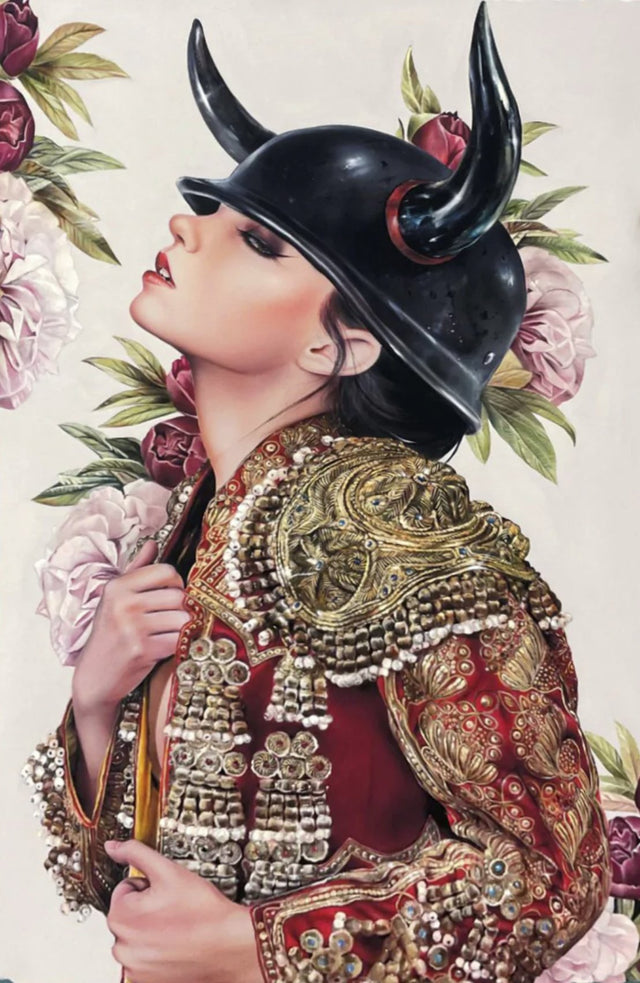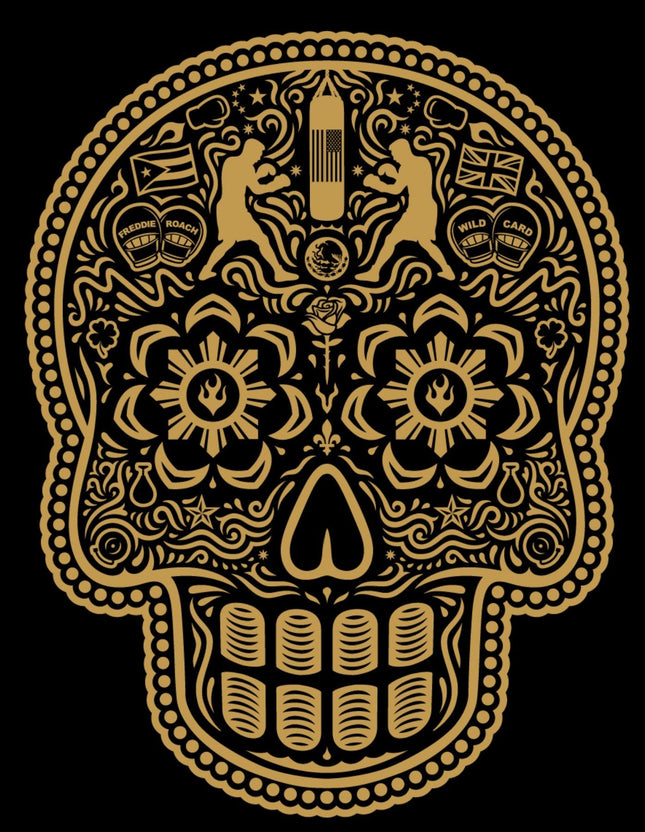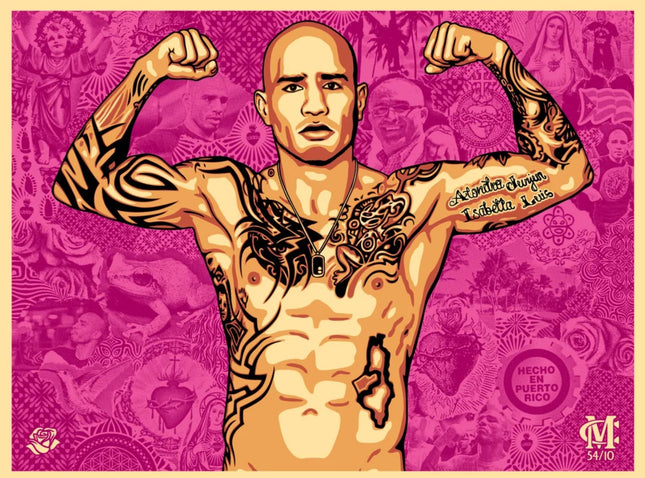
Spanish

Ernesto Yerena Montejano- Hecho Con Ganas Wild Card Boxing Club Calavera Silkscreen Print by Ernesto Yerena Montejano- Hecho Con Ganas
Wild Card Boxing Club Calavera Limited Edition 1-Color Hand-Pulled Silkscreen Print on Fine Art Paper by Ernesto Yerena Montejano Graffiti Street Artist Modern Pop Art. 2015 Signed & Numbered Wild Card Boxing Calavera 18x24 Edition of 300 Signed and Numbered Signed by Freddie Roach & Ernesto Yerena Montejano "Growing up in a Mexican-American working class family and community, I remember how important sports were to most of my friends and their families. Particularly, I so remember the early 90’s and seeing a lot of Raider, Charger, Chivas de Guadalajara and America jersey’s and of course those of the Dodger’s and their blue and white hats with the iconic LA blazoned on the front. But my immediate family was different. My dad who in the early 1990’s sold automotive paint and painted cars was surprisingly not that much into the usual sports but all except for BOXING! At that point in time I remember the gatherings at my house when there was a Julio Ces One- Rob Provenzano ar Chavez fight, a De La Hoya fight or a Maromero Paez fight. My dad would bring the TV outside, set-up a bunch of chairs, roll out the grill, fire up the mesquite and lay down the marinated carne asada before the first round bell. I remember how much fun those days were and how much pride people had in the Mexican fighters." -Ernesto Yerena Montejano
$364.00

Ernesto Yerena Montejano- Hecho Con Ganas Miguel Cotto Serigraph Print by Ernesto Yerena Montejano- Hecho Con Ganas
Miguel Cotto Limited Edition Hand Pulled 6-Color Serigraph Print on Fine Art Paper by Artist Ernesto Yerena Montejano (Hecho Con Ganas) Urban Modern Artwork. 2021 Signed & Numbered Limited Edition of 400 Size 18x24 Miguel Cotto x Ernesto Yerena Montejano This striking 6-color serigraph print, showcasing the formidable figure of Miguel Cotto, is a work by the dynamic artist Ernesto Yerena Montejano under his Hecho Con Ganas brand. The 2021 signed and numbered limited edition of 400 pieces, each sized at 18x24 inches, captures the essence of Cotto's athletic prowess and fighting spirit. The collaboration between Miguel Cotto and Ernesto Yerena Montejano brings forth an artwork steeped in urban modernity. It resonates deeply with the aesthetics of pop art, street art, and graffiti. Ernesto Yerena Montejano's signature style, which often melds the bold, graphic sensibilities of pop art with the subversive edge of street art, is evident in this piece. The representation of Cotto is not just as a sports icon but as a cultural symbol, reflecting the strength and resilience of a community. Each print, meticulously crafted, exudes the energy and passion that Cotto himself embodies. The vibrant colors and intricate details, from the tattoos that adorn Cotto's body to the background imbued with cultural references, create a visual narrative that extends beyond the confines of the canvas. This artwork does more than just depict a sports figure; it tells a story of heritage, pride, and unwavering determination. Including text within the artwork adds a layer of personal touch, signifying the intimate relationship between the subject and the artist, and between the artwork and its audience. Montejano’s choice to produce these pieces through traditional hand-pulled serigraphy adds to their exclusivity and allure, bridging the gap between artisanal craft and contemporary art. The collaboration of Miguel Cotto and Ernesto Yerena Montejano in this limited edition series is a cultural statement, merging the realms of athletics, art, and identity. Through this print, Montejano not only showcases his artistic talent but also pays homage to the fighting spirit that both he and Cotto share, a spirit deeply rooted in their collective experiences and individual endeavors.
$364.00



